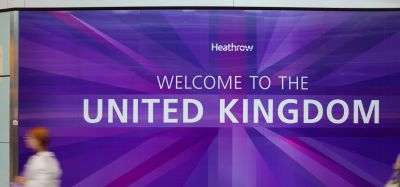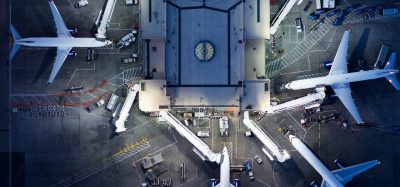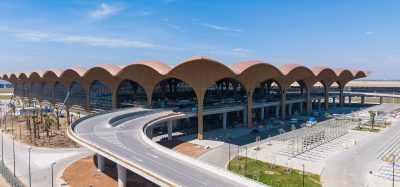Plans for expansion: catching up with Aena’s Managing Director
Posted: 8 December 2023 | Chunekshi Wimalasuriya, Elena Mayoral | No comments yet
Editorial Assistant, Chunekshi, had the opportunity to interview Elena Mayoral, the Airports Managing Director of Aena, and learnt about Aena’s plans to innovate and expand in the future to become more structurally enhanced.


Aena exceeds pre-pandemic EBITDA levels one year earlier than scheduled in the Strategic Plan 2022-2026.
Please tell us about your role and what it means for Aena?
I am in charge of all the airports in our Aena network – which includes 46 airports and two heliports – operating and planning infrastructures, and construction of all the infrastructures.
Are there any new developments happening at Aena that you could tell us about?
Yes, as a matter of fact we have a regulatory framework, which determines the level of investment we must accomplish. We are now in the second period of the airport regulation document called DORA. This second DORA, from 2022 to 2026, guarantees the highest levels of safety and quality in the management of airport facilities.
First, we have the construction works for the renovation of the terminal building in Palma de Mallorca. It’s an investment of 600 million euros, orientated around refurbishing the terminal to make it as smooth and easy for our passengers to use as possible. This investment is very focused on enhancing the customer experience, and facilitating processes through renewing the terminal building, which has not been done in several years.
In addition, during this DORA, we are also planning for the next one, for the period of 2027 to 2031. We are now focusing on the expansion of Madrid-Barajas Airport, the largest airport in our network, which means the breadths for expansion of Terminals 4/4S and Terminals 1, 2, and 3.
Talking about sustainability, we are also involved in a very challenging plan, which is one of the pillars of Aena’s climate action plan. We want to generate all of the energy that all the airports need across the network, and so are investing 350 million euros to achieve this goal.
Aena is partnering with Cellnex to bring 5G technology to San Sebastian Airport. What is this partnership and what it is set to achieve?
We believe 5G is the future and a key technology for the digital transformation process of Aena airports. So, in partnership with Cellnex, we are running a pilot project at San Sebastian Airport to support the operation of drones, utilising the 5G network. This is the first private network based on 5G technology brought into service in Spanish airports.
Today, we use drones at our airports for security. We are looking for the future uses of drones in relationship to security, safety and even for aspects such as testing the lights in the runway and so on. 5G will help to further advance the Internet of Things (IoT) and help to implement big data, virtual and augmented reality and artificial intelligence.
It will be interesting to learn the results of this pilot, testing specific airport use cases, and we are delighted that Cellnex has given us the net to support it.
Why is modernisation is so important for airports?
Well, modernisation and innovation is our future. It is this thinking that is driving our work with Cellnex in the 5G pilot. Previously we have, for example, conducted pilots in biometrics and now we are developing it in several airports. But we continue to be focused and oriented to the passenger, and we want a seamless experience for all of our passengers.
Our aim is that the passenger comes to the airport and goes through without experiencing anything – like going through a gate seamlessly. No matter if they go to the checking counter, security, boarding, it has to be seamless. So, we are trying to utilise all the available innovation, both now and in the future, to make this possible.
Are you looking to replicate this pilot project to other airports across Spain?
Well, naturally it’s a pilot, so we will study the results and how it works in depth. You must remember that we have 46 airports in Spain and two heliports, and they are two hubs. There are 13 tourist airports, 26 regional airports, and seven heliports and general aviation airports. It is important when piloting any new technology to analyse the results and consequently decide where to deploy that kind of innovation.
It’s been recently reported that over 25 million passengers passed through Aena’s airports in May 2023. What is the reason for the success?
Collaboration between all the stakeholders is the most important thing in achieving success. We work a lot with airlines, and also saw success in the summer of 2022, so we are encouraged to see this continue this year.
Preparation is key. We will prepare through the winter for the summer of 2024. This involves talking with airlines, with the national police, with haulers, particularly to try to anticipate any potential difficulties ahead of peak operation times (for instance Easter and summer). Communicating openly and frankly is a strength of our relationships and can help to mitigate problems before they arise.
It’s a frank dialogue in which we all say what the processes will be for the future. We had a test at Easter, and it went perfectly well, so we hope that it will be the same for this summer. We try to be prepared, prepare in terms of real time and also check the capacity of our infrastructure. If we see that a system is going to be constrained in the nearby future, we consider expansion. We are continually testing our infrastructure and all the processes of the passengers and constantly fine-tuning.
Have you noticed any changes in passenger needs now?
We have discovered that after the pandemic, everybody wants to fly, fly, fly. Business traffic is perhaps recovering a little bit slower than leisure and visits to see relative and friends. But we believe business travel will return to the levels we saw before COVID-19, especially as conferences and events resume and people are keen to connect and network with others in their industries. The relationship between people and networking is so important and it has to be maintained.
Have you noticed any differences in the tourist destinations of Spanish airports?
We have 13 touristic airports, so they are the ones that we have seen recover earlier, post the pandemic. Tourist destinations like Menorca and Ibiza have recovered strongly. The group of airports in the Canary Islands have actually recovered over 100% of traffic. Certainly, the recovery of the touristic airports is really strong in comparison to the other airports we run.


About the Author
Elena Mayoral, Managing Director Airports
Elena is Aena’s Director of Airport Planning and Regulatory Control from April 2021 to February 2023. She was Aena’s Director of Planning and the Environment between 2019 and 2021, Director of Adolfo Suárez Madrid-Barajas Airport between 2013 and 2019, and, previously, director of the airports of Valladolid and Ibiza.
She joined Aena in 2002 in the Planning Directorate, where she worked on analysis and forecasting for airport infrastructures, as well as Supply and Demand Prospecting and Analysis. She began her career in the private sector, working for engineering consultancies, on studies and projects relating to different airport infrastructures in Spain, the United Kingdom and Germany. She was a board member of ACI World between 2016 and 2022. She is also a board member of Aena International.
Stay Connected with International Airport Review — Subscribe for Free!
Get exclusive access to the latest airport and aviation industry insights from International Airport Review — tailored to your interests.
✅ Expert-Led Webinars – Gain insights from global aviation leaders
✅ Weekly News & Reports – Airport innovation, thought leadership, and industry trends
✅ Exclusive Industry Insights – Discover cutting-edge technologies shaping the future of air travel
✅ International Airport Summit – Join our flagship event to network with industry leaders and explore the latest advancements
Choose the updates that matter most to you.
Sign up now to stay informed, inspired, and connected — all for free!
Thank you for being part of our aviation community. Let’s keep shaping the future of airports together!
Related topics
Airport development, Digital transformation, New technologies, Operational efficiency
Related airports
Adolfo Suárez Madrid-Barajas Airport (MAD), Palma de Mallorca (PMI), San Sebastian Airport (EAS)


















